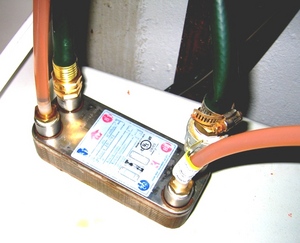This section of sample problems and solutions is a part of The Actuary’s Free Study Guide for Exam 3F / Exam MFE, authored by Mr. Stolyarov. This is Section 81 of the Study Guide. See an index of all sections by following the link in this paragraph.
Historical volatility calculations are likely to appear on Exam MFE. Here, a systematic method for finding the historical volatility of a given set of stock price data will be given.
Let S1, S2, … Sn+1 be the prices of a stock at times 1 through n+1, with each time period being of length h.
Then the non-annualized continuously compounded return rj for the jth time period (where j can be anything from 1 to n) are as follows: rj = ln(Sj+1/Sj)
Then the variance of all of these non-annualized continuously compounded returns r1 through rn is σh2 = (1/(n-1))j=1nΣ(rj – m)2, where m is the mean of all of the returns r1 through rn and σh is the standard deviation of returns for a time period of length h.
The annualized historical volatility σ of these returns is then σ = σh/√(h)
As you might suspect, the calculation of historical volatility is a step-by-step process where it is important to do the steps in order. The first four problems of this section will illustrate the four steps involved in calculating historical volatility, after which you will be ready to attempt an exam-style question.
Some of the problems in this section were designed to be similar to problems from past versions of Exam 3F / Exam MFE. They use original exam questions as their inspiration – and the specific inspiration for each problem is cited so as to give students a chance to see the original. All of the original problems are publicly available, and students are encouraged to refer to them. But all of the values, names, conditions, and calculations in the problems here are the original work of Mr. Stolyarov.
Original Practice Problems and Solutions from the Actuary’s Free Study Guide:
Problem HV1. The monthly prices S of a certain stock are given as follows:
Month 1: S = 654
Month 2: S = 456
Month 3: S = 679
Month 4: S = 524
Month 5: S = 996
Month 6: S = 1000
Find all of the five non-annualized continuously compounded monthly returns on the stock, from r1 through r5.
Solution HV1. We use the following formula: rj = ln(Sj+1/Sj)
r1 = ln(S2/S1) = ln(456/654) = r1 = -0.3606145419
r2 = ln(S3/S2) = ln(679/456) = r2 = 0.398128318
r3 = ln(S4/S3) = ln(524/679) = r3 = -0.2591294432
r4 = ln(S5/S4) = ln(996/524) = r4 = 0.6422555733
r5 = ln(S6/S5) = ln(1000/996) = r5 = 0.0040080214
Problem HV2. The monthly prices S of a certain stock are given as follows:
Month 1: S = 654
Month 2: S = 456
Month 3: S = 679
Month 4: S = 524
Month 5: S = 996
Month 6: S = 1000
Find the mean m of the non-annualized continuously compounded monthly returns on the stock, from r1 through r5.
Solution HV2. We already found r1 through r5 in Solution HV1. Now we take their arithmetic average: (-0.3606145419 + 0.398128318 – 0.2591294432 + 0.6422555733 + 0.0040080214)/5 =
m = 0.0849295855
Problem HV3. The monthly prices S of a certain stock are given as follows:
Month 1: S = 654
Month 2: S = 456
Month 3: S = 679
Month 4: S = 524
Month 5: S = 996
Month 6: S = 1000
Find the variance of the non-annualized continuously compounded monthly returns on the stock, from r1 through r5.
Solution HV3. We use the formula σh2 = (1/(n-1))j=1nΣ(rj – m)2. Here, n = 5, m = 0.0849295855 from Solution HV2, and the rj are known from Solution HV1. Thus,
σh2 = (1/4)j=15Σ(rj – 0.0849295855)2 =
(1/4)[(r1 – 0.0849295855)2 + (r2 – 0.0849295855)2 + (r3 – 0.0849295855)2 + (r4 – 0.0849295855)2 + (r5 – 0.0849295855)2] =
(1/4)[(-0.3606145419 – 0.0849295855)2 + (0.398128318 – 0.0849295855)2 + (-0.2591294432 – 0.0849295855)2 + (0.6422555733 – 0.0849295855)2 + (0.0040080214 – 0.0849295855)2] =
σh2 = 0.1830350467
Problem HV4. The monthly prices S of a certain stock are given as follows:
Month 1: S = 654
Month 2: S = 456
Month 3: S = 679
Month 4: S = 524
Month 5: S = 996
Month 6: S = 1000
Find the annualized historical volatility of the returns on this stock over the given time period.
Solution HV4. We use the formula σ = σh/√(h). From Solution HV3, σh2 = 0.1830350467, so
σh = 0.4278259538. Here, since each time period is one month, h = 1/12. Thus, the historical volatility σ = 0.4278259538/√(1/12) = σ = 1.482032578
Problem HV5.
Similar to Question 17 from the Society of Actuaries’ Sample MFE Questions and Solutions:
The monthly prices S of a certain stock are given as follows:
Month 1: S = 135
Month 2: S = 90
Month 3: S = 135
Month 4: S = 90
Month 5: S = 60
Month 6: S = 90
Month 7: S = 135
Find the annualized historical volatility of the returns on this stock over the given time period.
Solution HV5. First, we attempt to find the monthly continuously compounded returns r1 through r6, using the formula rj = ln(Sj+1/Sj).
Conveniently enough, 90/135 = 2/3 and 135/90 = 3/2. Similarly, 60/90 = 2/3 and 90/60 = 3/2.
Thus, each of the rj is either ln(3/2) or ln(2/3) = -ln(3/2). Furthermore, we note that the stock went up in price three times over this time period and went down in price the other three times. Thus, the average return on this stock m is equal to [3ln(3/2) + 3(-ln(3/2))]/6 = 0.
Now we use the formula σh2 = (1/(n-1))j=1nΣ(rj – m)2 to find the variance of these returns. Here, m = 0, n = 6, and each (rj)2 is [-ln(3/2)]2 or [ln(3/2)]2, both of which are 0.1644019539.
Thus, σh2 = (1/5)j=16Σ(0.1644019539) = (1/5)*6*0.1644019539 = σh2 = 0.1972823447, so
σh = 0.444164772 and σ = σh/√(h). Here, h = 1/12, since each time period is a month.
Thus, σ = 0.444164772/√(1/12) = σ = 1.538631904
See other sections of The Actuary’s Free Study Guide for Exam 3F / Exam MFE.


